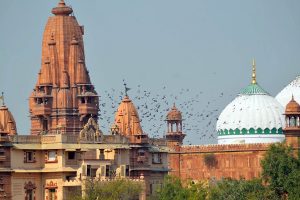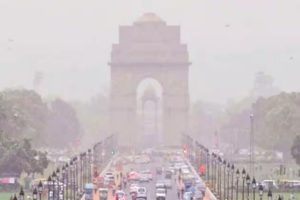Talks for the construction of a cricket stadium in Pokhara have been going on since the late 1990s. Sadly these talks have mostly gone unheard by the government and the Cricket Association of Nepal for a long time. But now the time seems ripe to amplify that voice.
Ever since the unfenced ground by the Gandaki River gorge was prepared for the ongoing Pokhara Premier League, people have been posting, on social media, photos of cricketers practising or playing with the whole shebang of snow-draped mountains providing a stunning background, all images suggesting that the area should be turned into an international-class cricket stadium.
But why should there be a cricket stadium in Pokhara? Granted an international- class stadium is being built in Mulpani, Kathmandu, and it will come into operation sooner or later. But this lone facility won’t be enough to fulfill the needs of the thousands of aspiring cricketers of this cricket-mad country, where cricket is slowly surging ahead of football as the most popular sport.
The recent successes of Nepal in different formats of the game internationally, including the gaining of the One Day Cricket status and the rise-to-fame of cricketers like Sandeep Lamichhane, would have motivated young Nepali kids to pursue cricket, creating the need for more cricketing infrastructure. It is high time we had more cricket infrastructure to enable these aspiring cricketers to hone their skills to reach the highest level of the game.
What little success Nepal’s cricketers have had in the international arena is despite the government’s support. A little help with the development of cricket infrastructure in the country will go a long away in putting Nepal at par with newer entrants to test- and one day cricket like Bangladesh. But it is not enough to have the infrastructures in Kathmandu alone. We need to have them outside the valley too to spread the growth of the sport evenly throughout the country. Even the country’s federal structure mandates that there be devolution of resources, including sporting facilities. And what better place than Pokhara to start devolving cricket facilities?
Blessed with so many natural wonders, Pokhara makes for an attractive stadium and can rival the best cricket grounds in the world. It can also aspire to be what Sharjah was in the 80s and the 90s, a neutral venue for international cricket matches, including the matches between India and Pakistan, two powerful cricketing nations of the subcontinent whose deep-rooted enmity has prevented them from playing against each other on their home turfs for some years now. Of course, the Mulpani Cricket ground is being built with an eye to developing it into just that, but Pokhara is propositioned to be a better neutral venue than Kathmandu.
As the country’s most popular tourist destination, Pokhara already has the infrastructure to accommodate and provide hospitality to hundreds and thousands of visitors that the game will bring in. Pokhara is not plagued with pollution as Kathmandu is. Its traffic problem is not as acute as Kathmandu’s. And there is not much to choose between the two cities weather-wise. True, it rains frequently in Pokhara, but the water drains out as quickly.
The only disadvantage as far as I can see—and that too as of now—against Pokhara’s claim for being a neutral venue is air connection, as players, match officials, media persons and international audience cannot fly into Pokhara directly. But this won’t handicap Pokhara’s claim for long. The work on the international- class regional airport in Pokhara is going on in a feverish pace and it is expected to be completed by 2021.
The Pokhara stadium needs an international-class airport if it hopes to develop into a neutral cricketing venue as much as the Pokhara airport needs an international-level stadium, if it hopes to run profitably. To be built with an investment of $305 million, the airport needs hundreds and thousands of passengers flying in and out of the city for it to remain afloat, and part of that need would be met by cricket fanatics from the South Asian region and beyond. That Pokhara is already known as the gateway to many famous trekking destinations means that cricket buffs from around the world would have an additional incentive to travel to Pokhara.
Imagine how much these sports tourists will contribute to the tourism of Nepal. And imagine the kind of impression a live telecast of a cricket match between, let us say, India and Pakistan leave behind on the millions of viewers around the world, when, in between breaks, the camera zooms in on the breathtaking Annapurna range, and the drone captures, the footage of the Shanti Stupa, the many lakes that dot it and the green hills rimming the city. That would create a windfall for Nepali tourism and do to Nepali tourism what no number of paid advertisements can do.
Cricket and tourism should be tied together by building a cricket stadium in Pokhara to promote international championships and attract sports fans. To expect the government, which has always been apathetic to sports, to take an initiative on this on its own is too much. Nor can we expect the Cricket Association of Nepal, the governing body for cricket, which remains suspended because of politics, to take the lead.
So the onus is thus on tourism entrepreneurs and cricket aficionados of Pokhara, the Chief Minister of Gandaki Province, Prithvi Subba Gurung, who has been making all the right noises about the autonomy of provincial governments, and Rabindra Adhikari, who is the minister for tourism and someone who was at the forefront of lobbying for the construction of the airport in Pokhara.
The Kathmandu Post/ANN












